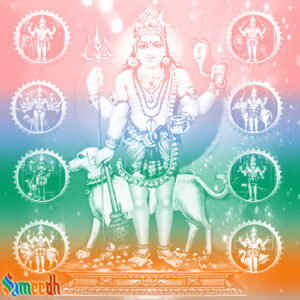Bhairav is a fierce and wrathful form of Lord Shiv, often associated with annihilation and the power of time. The term “Bhairav” is derived from the Sanskrit words “Bhaira,” meaning fear, and “Rav,” meaning sound, suggesting the terrifying or awe-inspiring aspect of this form. Bhairav is considered a guardian deity and is worshipped for protection and the removal of obstacles.

Here are some notable forms of Bhairav:
- Kala Bhairav: Kala Bhairava is one of the most well-known forms of Bhairav. The word “Kala” refers to time, and Kala Bhairav is often depicted as the controller of time, emphasizing the transient nature of life.
- Ashta Bhairavs: Bhairav is sometimes worshipped in eight different forms, known as the Ashta Bhairavas. Each form represents different aspects and attributes. The eight Bhairavs are:
- Asithaanga Bhairav
- Unmatha Bhairav
- Bheeshana Bhairav
- Samhaara Bhairav
- Krodha Bhairav
- Kapaala Bhairav
- Ruru Bhairav
- Chanda Bhairav
- Rudra Bhairav: Rudra Bhairav is another form associated with Lord Shiva’s wrathful aspect. In this form, Bhairav is considered a manifestation of Rudra, the fierce aspect of Shiv.
- Batuk Bhairav: In some traditions, Batuk Bhairav is worshipped as a child form of Bhairav. This form represents the innocent and playful aspect of the deity.
- Danda Bhairav: Danda Bhairav is associated with administering divine justice and maintaining cosmic order. The word “Danda” means a stick or rod, symbolizing the authority and power to uphold justice.
- Samhara Bhairav: This form of Bhairav is associated with destruction and dissolution. Devotees may seek the blessings of Samhara Bhairav for the removal of obstacles and negative forces.
Each form of Bhairav has its own unique attributes and symbolism, and devotees may choose to worship a specific form based on their spiritual goals and needs. Bhairav is often propitiated through specific rituals, prayers, and mantras to seek protection, guidance, and liberation from the cycles of life and death.